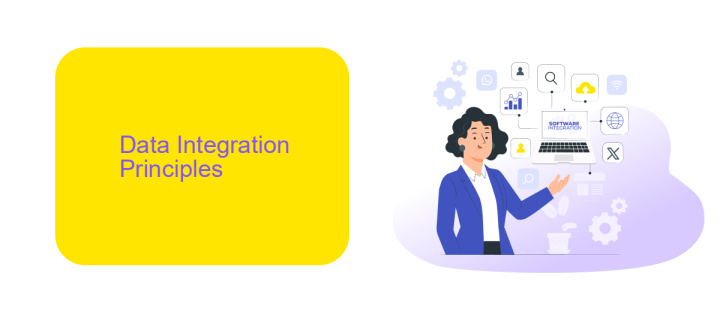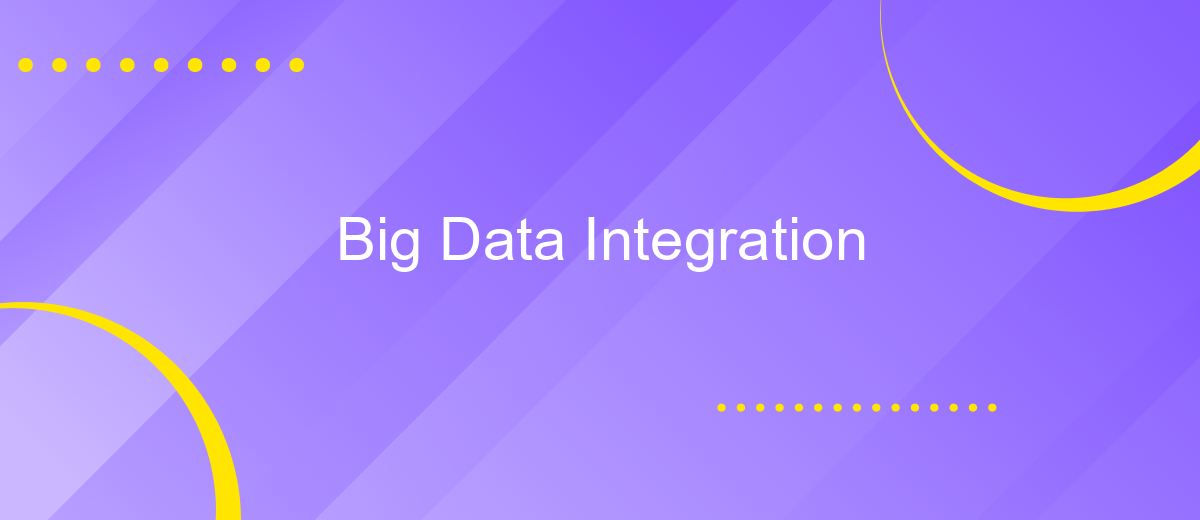Big Data Integration
Big Data Integration is the process of combining and managing vast amounts of data from diverse sources to generate valuable insights. As organizations increasingly rely on data-driven decision-making, integrating disparate data sets becomes crucial for achieving comprehensive analysis and fostering innovation. This article explores the key strategies, challenges, and benefits of effectively integrating Big Data in today's rapidly evolving technological landscape.
Introduction
Big Data Integration is a critical process for organizations aiming to leverage vast amounts of data from various sources to drive insights and decision-making. The integration of big data involves combining data from different platforms and formats into a unified system, ensuring that the data is accurate, consistent, and accessible for analysis.
- Data Consolidation: Aggregating data from multiple sources into a single repository.
- Data Transformation: Converting data into a common format for seamless analysis.
- Data Quality Management: Ensuring the integrity and accuracy of the data.
- Data Governance: Establishing policies and procedures for data management.
Services like ApiX-Drive facilitate the integration process by providing automated workflows that connect various data sources and applications. ApiX-Drive simplifies the setup, allowing businesses to integrate their data without extensive coding or technical expertise. This ensures that organizations can focus on deriving actionable insights from their data, rather than getting bogged down by the complexities of integration.
Data Integration Principles

Data integration is a fundamental principle in managing and utilizing Big Data effectively. It involves combining data from different sources to provide a unified view, enabling better decision-making and insights. The process starts with data extraction, where data is collected from various databases, applications, and cloud services. This is followed by data transformation, where the collected data is cleaned, formatted, and standardized to ensure consistency and accuracy. Finally, data loading involves transferring the processed data into a centralized repository, such as a data warehouse or data lake, for further analysis and reporting.
Effective data integration requires robust tools and services to automate and streamline the process. One such service is ApiX-Drive, which facilitates seamless integration between various data sources and applications. ApiX-Drive offers an intuitive interface and pre-built connectors that simplify the setup and management of data integration workflows. By leveraging such tools, organizations can reduce manual efforts, minimize errors, and ensure real-time data synchronization. This enables businesses to harness the full potential of their Big Data, driving innovation and competitive advantage.
Big Data Integration Technologies

Big Data Integration Technologies are essential for managing and utilizing large volumes of data from diverse sources. These technologies enable seamless data flow and ensure that data is consistent and accessible for analysis and decision-making. Effective integration tools help organizations to combine, transform, and load data efficiently.
- ETL (Extract, Transform, Load) Tools: These tools extract data from various sources, transform it into a suitable format, and load it into a data warehouse. Examples include Apache Nifi and Talend.
- Data Integration Platforms: These platforms provide comprehensive solutions for data integration, including real-time data processing and data quality management. Examples include Apache Kafka and Informatica.
- API Integration Services: Services like ApiX-Drive facilitate the integration of various applications and systems through APIs, enabling automated data exchange and synchronization.
- Cloud-Based Integration: Cloud platforms like AWS Glue and Google Cloud Dataflow offer scalable and flexible integration solutions that support big data processing and analytics.
By leveraging these technologies, organizations can achieve a unified view of their data, improve operational efficiency, and gain valuable insights. ApiX-Drive, for instance, simplifies the integration process by providing user-friendly tools to automate data workflows, making it easier to connect disparate systems and applications.
Big Data Integration Challenges

Integrating big data into existing systems presents numerous challenges that organizations must navigate. One of the primary obstacles is managing the sheer volume and variety of data generated from multiple sources. Ensuring data quality and consistency across these diverse datasets is another significant hurdle.
Data integration also requires robust infrastructure and advanced tools to process and analyze large datasets efficiently. This often necessitates substantial investment in technology and skilled personnel. Additionally, maintaining data security and privacy during integration processes is crucial, especially with stringent regulatory requirements.
- Handling large volumes of data from various sources
- Ensuring data quality and consistency
- Investing in robust infrastructure and skilled personnel
- Maintaining data security and privacy
- Complying with regulatory requirements
To address these challenges, services like ApiX-Drive can be invaluable. ApiX-Drive offers automated data integration solutions that streamline the process, ensuring data consistency and security. By leveraging such tools, organizations can more effectively manage their big data integration efforts, allowing them to focus on deriving actionable insights from their data.
Future Trends in Big Data Integration
The future of Big Data Integration is poised for significant advancements, driven by the increasing volume and complexity of data. One key trend is the rise of automated integration platforms like ApiX-Drive, which streamline the process of connecting disparate data sources. These platforms use AI and machine learning to enhance data mapping and transformation, making it easier for organizations to integrate data without extensive manual intervention. This automation not only saves time but also reduces the risk of human error, ensuring more accurate and reliable data integration.
Another emerging trend is the integration of real-time data processing capabilities. As businesses demand more immediate insights, the ability to integrate and analyze data in real-time becomes crucial. Technologies such as edge computing and advanced analytics are expected to play a significant role in this shift. Additionally, the adoption of cloud-based integration solutions will continue to grow, offering scalable and flexible options for handling large volumes of data. These trends indicate a future where Big Data Integration is more efficient, intelligent, and responsive to the dynamic needs of businesses.
FAQ
What is Big Data Integration?
Why is Big Data Integration important?
What are the common challenges in Big Data Integration?
How can I automate Big Data Integration processes?
What is the role of ApiX-Drive in Big Data Integration?
Do you want to achieve your goals in business, career and life faster and better? Do it with ApiX-Drive – a tool that will remove a significant part of the routine from workflows and free up additional time to achieve your goals. Test the capabilities of Apix-Drive for free – see for yourself the effectiveness of the tool.

